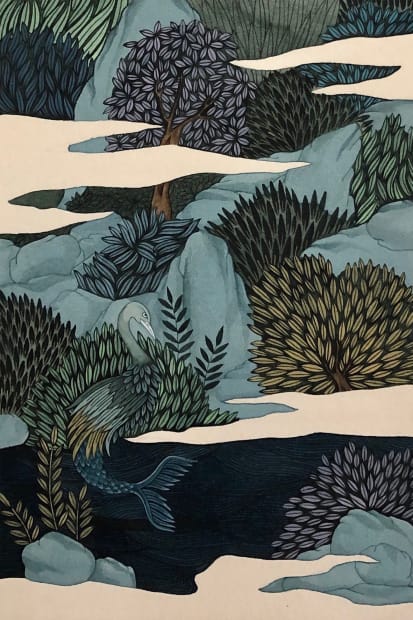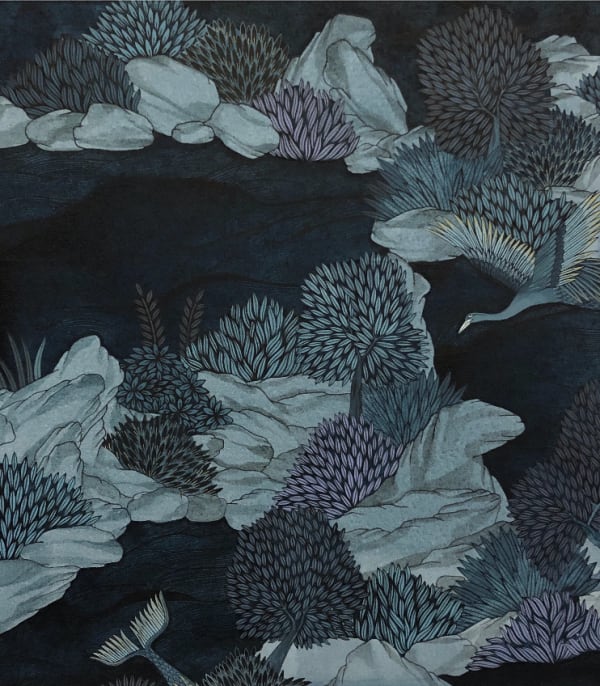-
Maha Ahmed - A Place That Cannot Be
-

-

-
Enquire
-
 Maha Ahmed, The shifting horizon I, 2020
Maha Ahmed, The shifting horizon I, 2020 -
 Maha Ahmed, The shifting horizon II, 2020
Maha Ahmed, The shifting horizon II, 2020 -
 Maha Ahmed, The shifting horizon III, 2020
Maha Ahmed, The shifting horizon III, 2020 -
 Maha Ahmed, Two parts , 2020
Maha Ahmed, Two parts , 2020
-
 Maha Ahmed, Of a whole, 2020
Maha Ahmed, Of a whole, 2020 -
 Maha Ahmed, Demon of a thousand faces, 2020
Maha Ahmed, Demon of a thousand faces, 2020 -
 Maha Ahmed, Fish-bowl II, 2020
Maha Ahmed, Fish-bowl II, 2020 -
 Maha Ahmed, Fish-bowl I, 2020
Maha Ahmed, Fish-bowl I, 2020
-
 Maha Ahmed, Fish-bowl III, 2020
Maha Ahmed, Fish-bowl III, 2020 -
 Maha Ahmed, Fish-bowl IV, 2020
Maha Ahmed, Fish-bowl IV, 2020 -
 Maha Ahmed, From Emptiness to the song within V, 2020
Maha Ahmed, From Emptiness to the song within V, 2020 -
 Maha Ahmed, From Emptiness to the song within VI, 2020
Maha Ahmed, From Emptiness to the song within VI, 2020
-
-
-
The divisions are most evident in the works employing the Japanese painting technique kumokasumi (clouds and mist), which Ahmed uses as a way of creating negative space. As well as evoking a magical atmosphere, these floating gaps represent the intangible boundaries that are created by the formation of collective narratives, which centre around identifying signifiers such as gender or race. In the painting entitled ‘Demon of a Thousand Faces’, for example, the land is fragmented into a collection of islands, which are each inhabited by a collective of animals and one outsider. Whilst there is a undercurrent of threat and tension in all of these encounters, the painting’s title references the changing nature of power in relation to identity. As Ahmed articulates, ‘It doesn’t matter who you are, there will always be a place where you will be out of place.’
In the painting entitled ‘One of Us’ the land is once again fractured by white space, but there remains a central pathway guiding the eye on a visual journey from the bottom of the canvas to the top. Along the way, there are clusters of three creatures in which the central animal appears to be in the process of morphing into the form of those surrounding them. This serves as a complex visual metaphor which can be understood as either a celebration of human adaptability, or as a demonstration of a dominant force’s ability to eradicate individuality. In either case, the repetition of the same encounter powerfully highlights the need for a wider perspective in order to understand the whole.
-
Through the intricacy and flatness of the miniature painting technique combined with a controlled use of colour, the artist invites a deeper level of visual engagement and concentration. In the painting ‘They Lie Amongst Us’, for example, the pink crane initially stands out as a protagonist within the lush landscape, but on closer inspection, we find other creatures struggling to establish their own sense of belonging. Through this carefully crafted composition, Ahmed exposes the risk of forming misconceived judgements based on first impressions. In striking visual contrast, ‘Fish Bowl’ comprises four monochromatic paintings, which are framed to highlight a kind of disconnected circularity. Each painting depicts half the body of two creatures which appear distinct to one another, but are, in fact, the same hybrid fish-bird animal. Again, it is their placement within the space and the arrangement of the canvases which manipulates the perspective, creating an experience of segregation and otherness which might otherwise be avoided.
In this way, Ahmed’s practice aligns with the philosophical study of phenomenology as it examines the structures of experience and consciousness through poetic, visual representations which reveal the limitations of individual and collective constructs. Similarly, the emphatic negation of the exhibition’s title ‘A Place That Cannot Be’ emphasises the illusory nature of the boundaries that we create and live by, whilst demonstrating how new perspectives can empower change - a message which speaks more widely of art’s power as a lens through which to see the world anew.
-
-
Maha Ahmed
Past viewing_room




















